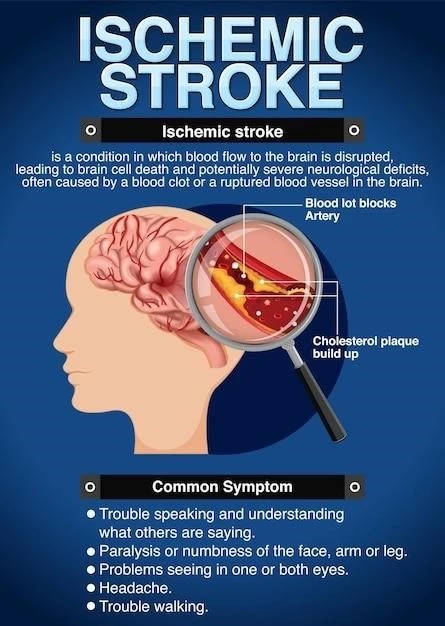Introduction
Myoclonus cerebellar ataxia deafness syndrome is a rare condition characterized by myoclonus, cerebellar ataxia, and sensorineural hearing loss․ It is crucial to understand the complexities of this syndrome for proper diagnosis and treatment․
Definition of Myoclonus Cerebellar Ataxia Deafness Syndrome
Myoclonus cerebellar ataxia deafness syndrome is a rare condition characterized by the triad of myoclonus, cerebellar ataxia, and sensorineural hearing loss․ This syndrome’s defining features include sudden, shock-like muscle jerks (myoclonus), difficulties with coordination and balance (cerebellar ataxia), and progressive sensorineural hearing impairment․ Understanding these key clinical manifestations is essential for accurate diagnosis and appropriate management of individuals affected by this complex syndrome․
Clinical Presentation
Individuals with myoclonus cerebellar ataxia deafness syndrome may experience a unique combination of symptoms including myoclonus, cerebellar ataxia, and sensorineural hearing loss․ Recognizing these signs is crucial for timely intervention and management․
Symptoms Associated with the Syndrome
Individuals with myoclonus cerebellar ataxia deafness syndrome may exhibit a range of symptoms including myoclonus (sudden muscle jerks), cerebellar ataxia (problems with coordination), and sensorineural hearing loss․ Other potential features may include intention tremor, unsteady gait, insomnia, behavioral changes, and a loss of muscle control․ Recognizing these symptoms is crucial for early detection and appropriate management of the condition․
Identification and Diagnosis
Identification of myoclonus cerebellar ataxia deafness syndrome involves recognizing the characteristic symptoms including myoclonus, cerebellar ataxia, and sensorineural hearing loss․ Diagnosis often requires a thorough medical history, physical examination, imaging studies, and genetic testing to confirm the presence of the syndrome․ Early and accurate diagnosis is crucial for implementing appropriate treatment strategies and managing the progressive nature of the condition effectively․

Genetic Factors
Understanding the genetic factors underlying myoclonus cerebellar ataxia deafness syndrome involves exploring autosomal dominant inheritance patterns and the importance of genetic testing for identifying specific mutations associated with the syndrome․ Genetic factors play a crucial role in the manifestation and progression of this complex condition․
Autosomal Dominant Inheritance
Autosomal dominant cerebellar ataxia, deafness, and narcolepsy (ADCADN) involve traits related to a gene encoded on autosomes where manifestation occurs in heterozygotes․ Understanding this mode of inheritance is crucial for recognizing genetic factors associated with myoclonus cerebellar ataxia deafness syndrome․
Genetic Testing and Mutations
Genetic testing plays a crucial role in identifying specific mutations associated with myoclonus cerebellar ataxia deafness syndrome․ Understanding the genetic makeup through testing allows for a more precise diagnosis and personalized treatment approach tailored to the individual’s genetic profile․ By unraveling the genetic mutations linked to this syndrome, healthcare providers can offer targeted interventions to manage the symptoms effectively․
Neurological Manifestations
Neurological manifestations in myoclonus cerebellar ataxia deafness syndrome include progressive myoclonic epilepsies and paraneoplastic syndromes in ataxias․ Understanding these neurological aspects is crucial for comprehensive management and treatment․
Progressive Myoclonic Epilepsies
Progressive myoclonic epilepsies are characterized by myoclonic seizures, tonic-clonic seizures, and progressive neurological decline, often accompanied by cerebellar signs and dementia․ Recognizing the unique features of these epilepsies is crucial for accurate diagnosis and management, particularly in individuals with myoclonus cerebellar ataxia deafness syndrome․
Paraneoplastic Syndromes in Ataxias
Paraneoplastic syndromes in ataxias may be associated with sensorineural hearing loss when regions such as the ganglia of Corti and the cochlear nuclei in the brainstem are affected․ Understanding the potential link between paraneoplastic syndromes and hearing impairments is essential for comprehensive care and management of individuals with myoclonus cerebellar ataxia deafness syndrome․
Treatment Approaches
Effective management of myoclonus cerebellar ataxia deafness syndrome involves addressing symptoms through a multidisciplinary approach․ Therapeutic interventions may include medications to control myoclonus, physical therapy for ataxia, and hearing aids for sensorineural hearing loss․ Ongoing research aims to develop personalized treatments for better outcomes․
Management of Symptoms
Effective management of symptoms associated with myoclonus cerebellar ataxia deafness syndrome involves a multidisciplinary approach focusing on controlling myoclonus, addressing cerebellar ataxia through physical therapy, and utilizing hearing aids for sensorineural hearing loss․ By actively managing these individual symptoms, healthcare professionals aim to enhance the quality of life and functional independence of individuals affected by this complex syndrome․
Therapeutic Interventions and Research
Therapeutic interventions for myoclonus cerebellar ataxia deafness syndrome focus on managing symptoms through a multidisciplinary approach․ Research is ongoing to develop personalized treatments targeting the specific genetic mutations associated with the syndrome, aiming to improve outcomes and enhance the quality of life for individuals affected by this complex condition․ By staying informed about the latest advancements in treatment approaches and actively participating in research, both healthcare providers and individuals with the syndrome can contribute to advancements in managing this rare disorder effectively․
Case Studies
Reported cases of myoclonus cerebellar ataxia deafness syndrome provide unique insights into the clinical manifestations and challenges associated with this condition․ Understanding these cases can aid healthcare professionals in developing tailored treatment plans for individuals with this complex syndrome․
Reported Cases of Myoclonus Cerebellar Ataxia Deafness
Cases of myoclonus cerebellar ataxia deafness syndrome provide valuable insights into the diverse clinical presentations and challenges individuals face with this syndrome․ Analyzing reported cases aids in understanding the variability of symptoms and progression, guiding healthcare professionals in developing customized care plans tailored to each individual’s needs․
Twin Studies and Heritability
Research on identical twins with myoclonus cerebellar ataxia deafness syndrome showcases the heritability and genetic factors influencing this condition․ Analyzing twin studies can provide valuable insights into the hereditary nature of the syndrome and aid in understanding the genetic underpinnings of this complex disorder․
Prognosis and Quality of Life
Understanding the long-term outlook and quality of life for individuals with myoclonus cerebellar ataxia deafness syndrome is essential․ By assessing prognosis and ensuring quality care, healthcare providers can help enhance the well-being and functional independence of those affected by this complex condition․
Long-Term Outlook for Individuals with the Syndrome
The long-term prognosis and quality of life for individuals with myoclonus cerebellar ataxia deafness syndrome can vary based on the severity of symptoms and the individual’s response to treatment․ By closely monitoring disease progression and providing comprehensive care, healthcare professionals can help individuals manage their symptoms effectively and improve their quality of life, emphasizing the importance of a holistic approach to care to support overall well-being․

In conclusion, myoclonus cerebellar ataxia deafness syndrome presents a complex array of symptoms that impact individuals differently․ Understanding the genetic factors, neurological manifestations, and treatment approaches is crucial for providing personalized care and improving the quality of life for those affected by this rare condition․ Continued research and collaborative efforts in healthcare are essential to enhance treatment strategies and support individuals with this syndrome effectively in the long term․
